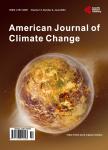Hydro-Meteorological Trends in Southwest Coastal Bangladesh: Perspectives of Climate Change and Human Interventions
Hydro-Meteorological Trends in Southwest Coastal Bangladesh: Perspectives of Climate Change and Human Interventions作者机构:Institute of Livelihood Studies (ILS) Dhanmondi Dhaka Bangladesh Institute of Water and Flood Management (IWFM) Bangladesh University of Engineering and Technology (BUET) Dhaka Bangladesh
出 版 物:《American Journal of Climate Change》 (美国气候变化期刊(英文))
年 卷 期:2013年第2卷第1期
页 面:62-70页
学科分类:1002[医学-临床医学] 100214[医学-肿瘤学] 10[医学]
主 题:Trend Hydro-Meteorology Southwest Coastal Bangladesh Salinity Tidal Water Level Human Interventions
摘 要:The southwest coastal region of Bangladesh, being under tidal influence and dependent on sweet water supplies from upstream, has a unique brackish water ecosystem. The region, having vast low-lying areas enclosed by man-made polders, is considered to be highly vulnerable to climate change induced hazards. In this study, linear trends in hydro-climatic variables, such as temperature, rainfall, sunshine, humidity, sweet water inflow and tidal water level in the region are assessed using secondary data and following both parametric and nonparametric statistical techniques. Correlation between the sweet water flow from the Gorai River, a major distributary of the Ganges River, and the salinity level in the Rupsa-Pasur River near Khulna, a southern metropolis, is also investigated. The results reveal that the temperature in the Khulna region is increasing at a significant rate, particularly in recent years. The number of extremely cold nights is decreasing and the heat index is increasing. The sunshine duration has a decreasing trend and the humidity has an increasing trend. Rainfall is increasing in terms of both magnitude and number of rainy days. However, the annual maximum rainfall and the number of days with high intensity rainfall have remained almost static. The annual maximum tidal high water level is increasing and the annual minimum low water level is decreasing at a rate of 7 - 18 mm and 4 - 8 mm per year, respectively. There is a negative correlation between the Gorai flow and the river water salinity around Khulna. Dredging of the Gorai during 1998-2001 resulted in an improvement of the salinity situation in the Khulna region. The variation in water salinity, tidal water level and sweet water flows in different time periods indicates that the human interventions through upstream diversion and coastal polders have contributed more in hydro-morphological changes in the southwest than the climate change. However, there are some evidences of climate change in th



